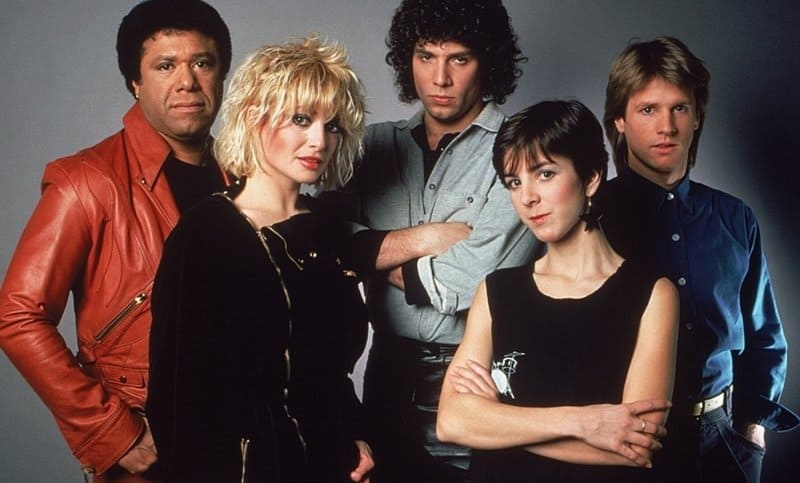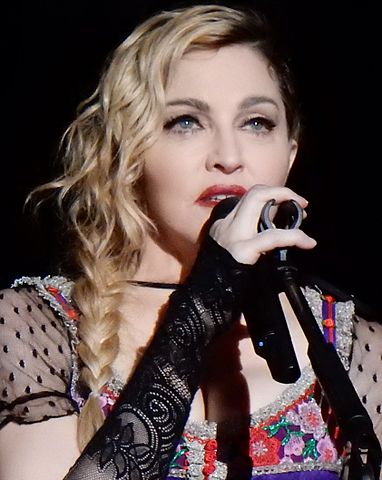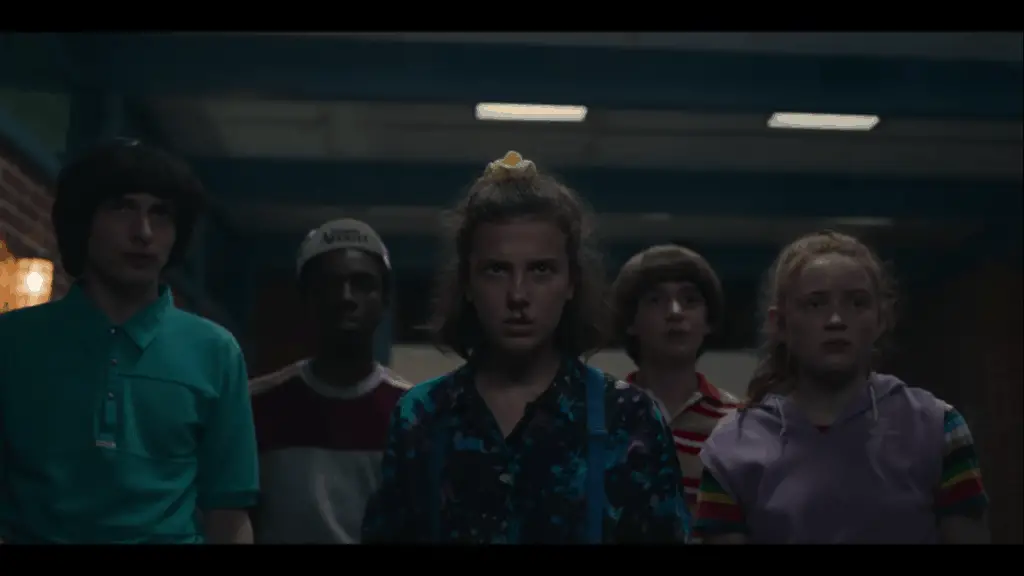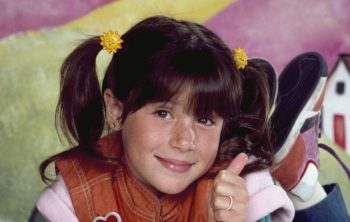
A lot of people don’t know the history of MTV, and music videos are a weird thing if you’re a kid growing up today. You have most certainly never seen one on tv because they don’t exist anymore. They’re definitely still important but they’ve now taken up residence on YouTube. But there was a time when they ruled the tv landscape
MTV was a music television station launched on August 1, 1981. It would play music videos which were a relatively new concept presented by video jockeys or VJ’s. MTV would change the way we consumed music and has lead to some of the most significant moments in pop culture.
I was too young when MTV first came out as I was only around 4. But when it would pick up its steam I was right in its wheelhouse going into the mid and late 80s. We didn’t have as much exposure to it in Canada but the concept was copied with our version called Much Music. Either way, they were both playing the same videos and groundbreaking shows like “Yo! MTV Raps” which was a dream show for a young me.
The
How New Zealand Created the history of MTV
Music Television, or MTV, was launched on August 1st, 1981 and was a channel created by Viacom Media Networks. This all really starts in 1977 with the possibility of the creation of specialty channels. Warner Cable, which was a division of Warner Communications, had launched the first two-way interactive cable television system in Columbus, Ohio. It was called QUBE, and it was able to offer several specialty channels.
One specialty channel they had was called “Sight on Sound”. It was a music channel but would show clips from certain concerts and shows that were music oriented. There weren’t really music videos to speak of then so it was more of a channel to showcase music in various formats.
Since QUBE was interactive, viewers were able to engage by voting on things like their favorite artists, songs and albums. These are archaic times and voting would be done by ancient technology such as mail and telephones. This would be important in the history of MTV.
This concept seemed intriguing and had the potential to be taken in a more advanced direction. Robert W. Pittman would be the guy who would be at the forefront of creating MTV. He had this idea in the back of his head when he used to host a 15-minute show called “Album Tracks” in New York on WNB-TV in the late ‘70s. With this idea, and the new interactive format being used by Warner Cable, it would set the stage for MTV.
Pittman had a boss that was instrumental in the history of MTV who was named John Lack. Lack had tried out a show called “Pop Clips” that was the creation of former Monkee Mike Nesmith. Nesmith was inspired by seeing this format work in New Zealand from a show called “Radio In Pictures”. Radio In Pictures had come out in 1976 and was a concept that had been around since the mid-‘60s.
As pop culture had started to really explode in the ‘60s, music, primarily from America and the U.K, was starting to be spread all over the world. Music videos did not exist yet and to see a band on TV meant having to watch a live performance.
Since New Zealand was so far away, it made promoting yourself and your music pretty difficult. A solution arose when the New Zealand Broadcasting Corporation started working with the record labels. They figured out it would work best for the labels to supply promotional music clips that they could play on air for no charge. Their artists would now get this extra exposure in a remote, and English speaking, part of the world without having to make the super long trip to get there.
Launching MTV
The concept was all put together and the format would involve playing these video clips, or “music videos” of current songs which were very bare bones. It’s not that music videos did not exist, but they were definitely not commonplace. The idea was to combine the airplay of the few available music videos but keep them playing 24 hours a day.
MTV launched at 12:01 am Eastern Time on August 1, 1981. They debuted with the phrase “Ladies and gentlemen, rock-and-roll”. This was spoken by John Lack and was played over footage of the countdown to the launch of the space shuttle Columbia. This kicked into the original MTV theme song while an image of an American Flag on the moon changed to the MTV logo.
The logo would change through various textures and designs and this was one of the first uses of the “Memphis Design” which was a new art style that would define the aesthetic and design of the 1980s. I’ve got a full blog on the Memphis Design here and it’s a pretty interesting story.
And what was the very first video to play after this on MTV? You better know this as it’s 80’s trivia 101: “Video Killed The Radio Star” by the Buggles.
“I want my MTV!” introduced in 1982 would be the famous catchphrase that would often be repeated through pop culture.
The thing I didn’t know about this is that MTV only first debuted in New Jersey so only people from the Garden State got to see the first music video ever played on American TV. But what was the second video to ever play in the history of MTV right after the Buggles?
“You Better Run” by Pat Benatar. That’s some good dinner party trivia right there, thank me later.
The Early Days At MTV
The concept of playing videos 24/7 was a new one, unfortunately, the technology was not quite there yet and you would often see periods of complete black on the screen as an employee would have to physically switch tapes into a new machine called a VCR which I wrote all about in this blog.
There were also a lot of repeats because in those early days there were only a few hundred music videos that they had in their system. They would also have to put in stock NASA footage at twenty past the hour for what was called “local avail”. This local avail was the time period where local cable companies could sell advertising. The problem was no one wanted to buy advertising, so they were stuck having to fill this empty time slot. A lot of people would think these were actual videos…
The thing was even though MTV was only playing in certain markets, and not attracting a lot of advertisers, it was a success right out of the gate. Local record stores that were in locations where MTV was playing were starting to sell more records for songs that weren’t being played on the radio. Some of these early unknown bands included Men At Work, The Human League, and Bow Wow Wow. No, I hadn’t heard of them either.
This was all happening within 2 months of the launch of MTV and they were already starting to notice something unexpected. The original target audience for MTV was going to be between 12-34 years of age. After doing some research they found that over 50% of the audience was actually between 12 and 24 years old. They also found that this age range watched more MTV for an average of at least 30 minutes to 2 hours.
MTV would then see a massive growth due to a small Island in the North Sea that had conquered America once before…
The Second British Invasion
Everyone knows about the first British invasion which obviously includes groups like:
- the Beatles
- The Rolling Stones
- The Dave Clark Five
- Hermans Hermits
- The Hollies
- The Animals
- Led Zeppelin
But a second British invasion would happen in this new age of video and it was primarily because of one TV show:
Top of the Pops.
In case you don’t know, “Top of the Pops” was a British music show on the BBC that started in 1964 and ran all the way until 2006. It was a British music chart TV show where popular acts would come on to perform if they were that weeks best selling artist. This show is a huge part of British Culture and would always lead to the coveted “Christmas #1 spot”.
The acts would usually lip sync their songs and then sometimes they would play to backing tracks to try to recreate the exact song from the record. Bands in England were used to having to get on TV and doing somewhat of a “live” music video. There would also be pre-recorded clips and the main thing was that British bands knew how important appearance was and presenting your music, and aesthetic, in a short time frame.
In North American bands just had to worry about creating a great song, album and concert experience. They weren’t really having to appear on TV and there was no concept of having to make a “music video”. In
Kids in Britain who would become musicians were used to this “music video” format from watching it through the 60s and 70s and by the time it came for them to get in front of the camera they were totally ready. They had already appeared on TV multiple times and knew the
Some of them had already been making music videos too, so they knew how to make these short films and look good in them too,
Some big American rock bands were having trouble with this new format and didn’t know how to present themselves. Add to that that a lot of them weren’t very easy on the eyes… \
Duran Duran was able to create quite a frenzy in the states as girls had been able to watch them for a while on MTV and they were liking what they saw. I’m trying to say how dreamy Duran Duran was OK?
The Original VJs

Everyone knew what a DJ was but what the hell was a VJ? MTV wanted to go with more album-oriented rock at first featuring more well known and established bands. The problem was they found out their audience was younger than they thought so they moved into more top 40 based music. Another problem was a lot of the music in the top 40 was by unknown new singers and bands. There was also new styles of music people really didn’t know including “New Wave” and more electronic dance-based music.
This
Some of the first VJs at MTV were:
- Mark Goodman
- Nina Blackwood
- Alan Hunter
- J. J. Jackson
- Martha Quinn (not the medicine woman..)
The VJs would start to become celebrities in their own right and sometimes MTV would use “guest VJs” such as Adam Ant, Billy Idol, Phil Collins, and Simon LeBon. Arguably one of the most famous VJs of all time would be “Downtown Julie Brown” who was the host of the Club MTV show from 1987 until 1992. Her full name is Julie Dorne Brown and had been a dancer on Top of the Pops. The show she hosted was one of the first that exclusively played dance music.
The Issue Surrounding Black Music
It’s a tough subject but one that needs to be looked back on. Despite the massive amount of amazing black musicians in the early 80s MTV wasn’t really playing them. There was the thought that the average white viewer wouldn’t be able to embrace it. There was one group of color that had been shown on the original few days and that was a British band called “The Specials” who were made up of black and white members.
The reason why MTV wasn’t playing them was that they said they were a rock based music station. But as they moved into top 40 this was impossible to keep leaning on. It was alleged that they were straight up rejecting videos like “Super Freak” by Rick James bitch because it didn’t “fit their format”.
Either way, it was getting a bit messy.
And then Michael Jackson moonwalked…
Michael Jackson was obviously a big star in 1983 but Thriller had just come out and he wasn’t the King of Pop and an absolute phenomenon just yet. A program was aired on May 16, 1983, that was called “Motown 25: Yesterday, Today, and Forever” which was a televised special celebration of the creation of the famous label.
The show wanted artists to perform older hits and that included Jackson who they wanted to perform some Jackson 5 material. Jackson had a new song called “Billie Jean” that he was adamant on performing but they weren’t letting older artists like Marvin Gaye do any of his new songs. Jackson was able to convince them and perform Billie Jean and though it only lasted 2.5 seconds his performance featured a new dance move called the “moonwalk” that would blow people away.
Most everyone saw this show, and this performance helped to
And MTV still weren’t playing him.
Walter Yetnikoff had finally had enough. He was the head of CBS Records and said the color barrier had to be broken. He cursed out MTV and said he was holding back any music from CBS so that it could not be played on MTV unless they started to play “Billie Jean”.
Billie Jean was added in but not right away. A normal rotation would involve a video being played at least 2-3 times and that didn’t include “Billie Jean” until it hit #1 on Billboard. It then went into this “medium” rotation but then by March of 1983 it went into heavy rotation. This was just one week before “Beat It” was to come out.
They then started to regularly play artists like Prince, Eddy Grant, Donna Summer, Herbie Hancock, and Lionel Richie. When the video for “Thriller” came out it completely changed the way music videos were approached and made. What used to be based on performances could now tell stories.
The Thriller video would open up more pop and R&B music being played on MTV along with a brand new art form.
Enter Hip Hop
If Hip Hop had come out earlier in the 80s, I don’t think it would have survived as a music genre. If MTV wasn’t playing Michael Jackson, there was no way in hell they would have played rap videos.
Hip Hop was picking up steam in the early 80s but thanks to Michael Jackson it opened up the doors for this new form of music to be embraced and shared. Artists that would be big hits on MTV would include:
- RUN DMC
- LL Cool J
- The Fat Boys
- The Beastie Boys
There would also be a giant crossover that would make a mark on the culture and music videos. The band Aerosmith had been big through the 70s but were kind of fading going into the 80s and the MTV era. They had released a song called “Walk This Way” in 1975 that was pretty much sitting around collecting dust.
RUN DMC was working on their album “Raising Hell” that was being produced by an upstart young producer named Rick Rubin. He pulled out an album called “Toys in the Attic” that featured “Walk This Way” that they would use to freestyle over. RUN DMC had only heard the first few seconds of the song and had no idea who Aerosmith
They all weren’t into it except for Jam Master Jay but eventually came around and recorded it with Joe Perry and Steven Tyler. The song caught on and was playing on both rock and urban stations. When it came time to make a video for it they created a musical duel between two different studios that ends with Tyler knocking down the wall into a joint performance.
“Walk This Way” became the first Hip Hop video to be played in heavy rotation in the history of MTV and re-launched the career of Aerosmith.
Fun fact: the video was only made for $67,000 and none of the band performing are the other members of Aerosmith besides Perry and Tyler. Steven Tyler was also hesitant to make the video as he didn’t want them to look stupid or appear to be made fun of.
Madonna

If there was a breakout start for the MTV era, it would have to be Madonna Louise Ciccone who could be considered the Queen of Pop. Sure, Michael Jackson could be considered a breakout star when it came to MTV but he had already been famous for years.
Madonna capitalized on the new artistic expression that could be used in music videos and the music could be tied to fashion and art. She had a few big hits in the early 80s with songs like “Burning Up” but they were mostly club based songs.
She then released “Holiday” which was the third single off her album and her first international top ten hit. She had a unique style that included a lot of lace tops, shirts over Capri pants, fishnet stocking, jewelry, bracelets,
Her next studio album, “Like A Virgin” would push Madonna to the next level. The title track “Like A Virgin” would push her popularity and introduce her controversy. The video for “Like A Virgin” agitated a lot of conservative organizations but increased her popularity. Madonna would be the first woman to sell over 5 million copies of an album and the album would end up certified diamond and would sell over 21 million copies.
MTV was instrumental in sharing her music and image but she would push things even further with a little performance at the still new MTV Video Music Awards. Madonna would perform “Like A Virgin” which started out with her on top of a wedding cake and would end up with her rolling around the stage for the majority of the song.
It’s considered one of the most iconic performances in the history of MTV and by critics. The performance skyrocketed her popularity and increased her fame overnight. These were the days when entire careers could be made in one show or performance. With very few things to watch on TV, there was a good chance a large majority of the country was tuning in and one big moment could launch careers of singers, bands, comedians, and performers.
Madonna would release other monster hits, and accompanying videos, including:
- Material Girl
- Crazy For You
- Into The Groove
- Papa Don’t Preach
- True Blue
- Open Your Heart
- Who’s That Girl
The Future Of MTV
There’s so much to cover with the history of MTV over the years that we could be here for days. I was mainly wanting to cover the period from its conception and launch into the 80s. Over the years there would still be many monumental videos and moments that would become significant parts of pop culture.
Heading into the mid-90s the play of music videos started to drop big time. Between 1995-2000 music videos were played 36.5% less. Music videos went from being played at least 8 hours a day to down to 3.
The advent of reality television switched the focus on MTV with shows like Singled Out, The Osbournes, Punk’d, Pimp My Ride, that piece of crap show with Jessica Simpson and Nick Lachey, up to the juggernaut that was Jersey Shore.
MTV would eventually stop playing music videos as with the advancement of YouTube and online sources there would be no point. Everything could be accessed instantly, and no one was going to wait around to watch something on TV not knowing when it may or may not be played.
Wrapping It Up
The history of MTV shows how it is a cultural institution and acts
The 80s was this great explosion of pop culture and MTV was absolutely at the forefront of this new revolution. If you want to go a bit further check out my article on 20 of the best bands of the 80s. And if you want some sweet clothing check out these vintage MTV shirts on Amazon.
Or if you want part 80s/part modern check out this amazing Bluetooth Ghetto Blaster also on Amazon.
Also, do yourself a solid and sign up for the email newsletter to start reliving the 80s!




Comments
Comments are closed.